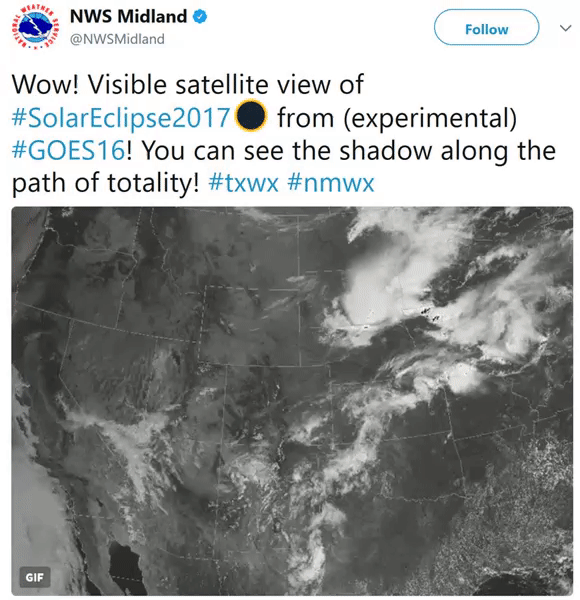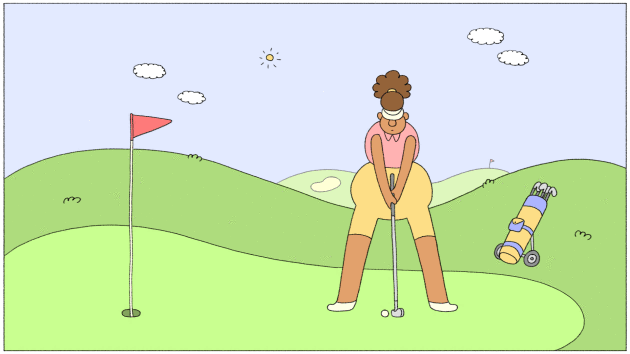80 F. average high on August 21.
74 F. high on August 21, 2016.
August 22, 1910: Daylight is dimmed in Duluth due to smoke from Rocky Mountain forest fires.
August 22, 1870: Downpours across southern Minnesota produce 5 inches at Sibley, and 3.49 at Ft. Snelling. Much of the wheat crop is damaged.

Still Giddy After Yesterday's Solar Eclipse?
Well, that was underwhelming. And for the record, we could have successfully predicted a cloudy solar eclipse for much of Minnesota 10 years ago. If you did see the moon-shadow consider yourself extra blessed.
Well, that was underwhelming. And for the record, we could have successfully predicted a cloudy solar eclipse for much of Minnesota 10 years ago. If you did see the moon-shadow consider yourself extra blessed.
It's
a metaphor. Summer has been eclipsed by a persistent family of Canadian
cool fronts in recent weeks. August is running 2.6F cooler than average
in the Twin Cities, and odds are we'll finish the month with a deficit
of degrees.
Farmers are complaining about a lack of heat (so crops can mature and fill out). Cabin dwellers are whining that it's been too cool for a dip in their favorite lakes.
Farmers are complaining about a lack of heat (so crops can mature and fill out). Cabin dwellers are whining that it's been too cool for a dip in their favorite lakes.
If only I could push a big red button and change the weather!
Skies
clear today as Canada sneezes the latest cool front south of the
border. Highs in the 70s (60s up north) with lows in the 50s? Hints of
late-September. At least we can enjoy a dry sky today into much of
Friday.
A return flow of moisture fuels showers late Friday into Sunday with temperatures trending cooler than
average. Maybe we'll warm up by Labor Day.
average. Maybe we'll warm up by Labor Day.
Life goes on after an (alleged) partial solar eclipse.
Ultimate Before - After Photograph.
The image above pretty much sums it up. For more details on what the
total solar eclipse looked like in Torrington, Wyoming check out the
post at CityLab.
Next Solar Eclipse?
If you didn't see the eclipse yesterday don't despair. It all depends
where you live, but much of Minnesota will see a partial solar eclipses
on October 14, 2023 and again on April 8, 2024, according to timeanddate.com. Punch in your zip code to get more information on the next eclipse. On second thought, maybe I'll just watch it on TV.
7-Day Rainfall Potential.
Keep an eye on Texas in the coming days - too early to say where the
heaviest rains will accumulate, but with ex-tropical storm Harvey likely
to strengthen again and track toward Texas amounts may be excessive
from Brownsville and Corpus Christi to Houston and New Orleans. South
Florida may pick up 4-6" rains over the next week.


Why Isn't Local Media Covering the Clean Power Plan? Columbia Journalism Review takes a look: "A daily newspaper in Texas published an editorial
about a month ago arguing that any changes President Trump makes to
Barack Obama’s climate-change plan shouldn’t include propping up the
coal industry at the expense of other energy sources: “The EPA has no
business in picking winners and losers.” “We’re in the middle of oil country,” says Roy Maynard, a senior editor at the Tyler Morning Telegraph. “We’re looking at that from a free-market approach. The government doesn’t need to be propping up any of these industries...”
Photo credit: Mercedes-Benz Energy. "Mercedes-Benz Energy, an offshoot of automotive giant Daimler, is among the companies with roots in the car business branching into energy storage."
Photo credit: "Hang on mum, I’m just catching up on The Conversation." Shutterstock
Image credit: "The part of the brain where migraines originate."

Photo credit: "Kate Russo, a clinical psychologist, has seen 10 total eclipses all over the world. Missing one is absolutely not an option." (Paul McErlane).
TODAY: Cool sunshine, breezy and pleasant. Winds: NW 10-15. High: 75
TUESDAY NIGHT: Clear and cool. Low: 55
WEDNESDAY: Comfortable sun, early touch of fall. Winds: NW 7-12. High: 73
THURSDAY: Partly sunny, low humidity. Winds: NW 5-10. Wake-up: 56. High: 74
FRIDAY: Sunny start, T-storms arrive late. Winds: SE 7-12. Wake-up: 58. High: 75
SATURDAY: Showers and T-storms likely. Winds: S 8-13. Wake-up: 59. High: 73
SUNDAY: Low expectations: showers may linger. Winds: NE 7-12. Wake-up: 57. High: near 70
MONDAY: Mostly cloudy, another shower? Winds: E 7-12. Wake-up: 56. High: 68
Climate Stories...
How the U.S. Navy is Responding to Climate Change. Here's an excerpt from Harvard Business Review: "...One is that the Navy is our primary waterborne military force. And as the planet warms, the amount of water is going to increase. That is, the area near the poles, which until quite recently has been closed to marine traffic for much if not all of the year, is going to be increasingly open as the ice melts. You think the last time the Western world really encountered a new ocean was in the early part of the 1500s, and the same kinds of opportunities and conflicts are going to exist in the Arctic. A second reason is that climate change is potentially destabilizing to societies, especially societies which are not particularly rich and not particularly well governed. And as those societies become increasingly stressed by things like drought and storm severity, the kinds of behaviors that call the military into action are going to become more frequent, whether those are wars or internal conflicts or just need for humanitarian assistance..."
What Liberals Get Wrong About Climate Change. An article at Axios resonated: "Democrats and environmental groups too often let their ideological agendas get in the way of addressing climate change. My thought bubble: Republicans are the bigger sinners in this debate because most of them refuse to acknowledge that climate change and humans' role driving it is a real thing, as I wrote in my column last week. The left faces an inherently different and trickier problem than the right's rejection of the science: Their tactics and messaging are hobbling their push to address climate change. To be sure, "the left" is broad and diverse, so much of what I say here can't apply to each and every elected Democrat or environmental group. Looking at the left broadly though, I see three big problems with their approach. Beltway Democrats and green groups have increasingly backed renewables at the expense of technologies that economic modeling says will be needed to tackle climate change to the extent scientists say is needed..."
Image credit: Rebecca Zisser / Axios.
Photo credit: "Rep. Carlos Curbelo, one of the most vulnerable Republicans in the House, said this week that the Climate Solutions Caucus has grown faster than he expected." | Susan Walsh/AP Photo.
Seas Rise, Trees Die: Climate Change Before Your Eyes. NBC Connecticut has the article: "They're
called "ghost forests" — dead trees along vast swaths of coastline
invaded by rising seas, something scientists call one of the most
visible markers of climate change. The process has occurred naturally
for thousands of years, but it has accelerated in recent decades as
polar ice melts and raises sea levels, scientists say, pushing salt
water farther inland and killing trees in what used to be thriving
freshwater plains. Efforts are underway worldwide to determine exactly
how quickly the creation of ghost forests is increasing. But scientists
agree the startling sight of dead trees in once-healthy areas is an
easy-to-grasp example of the consequences of climate change. "I think
ghost forests are the most obvious indicator of climate change anywhere
on the Eastern coast of the U.S.," said Matthew Kirwan, a professor at
Virginia Institute of Marine Science who is studying ghost forests in
his state and Maryland..."
Photo credit: Stephen B. Morton/AP. "In
this July 16, 2017, photo, the sun rises on a "ghost forest" near the
Savannah River in Port Wentworth, Ga. Rising sea levels are killing
trees along vast swaths of the North American coast by inundating them
in salt water."
No comments:
Post a Comment